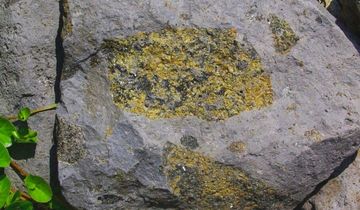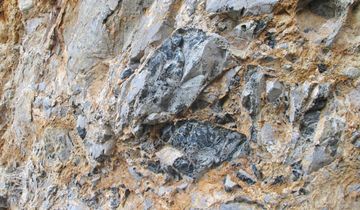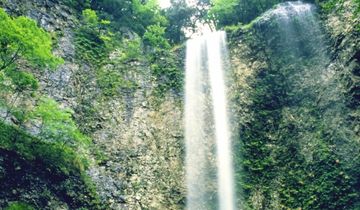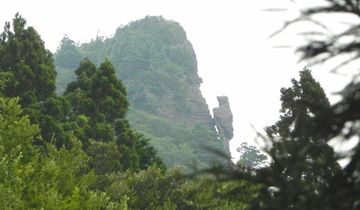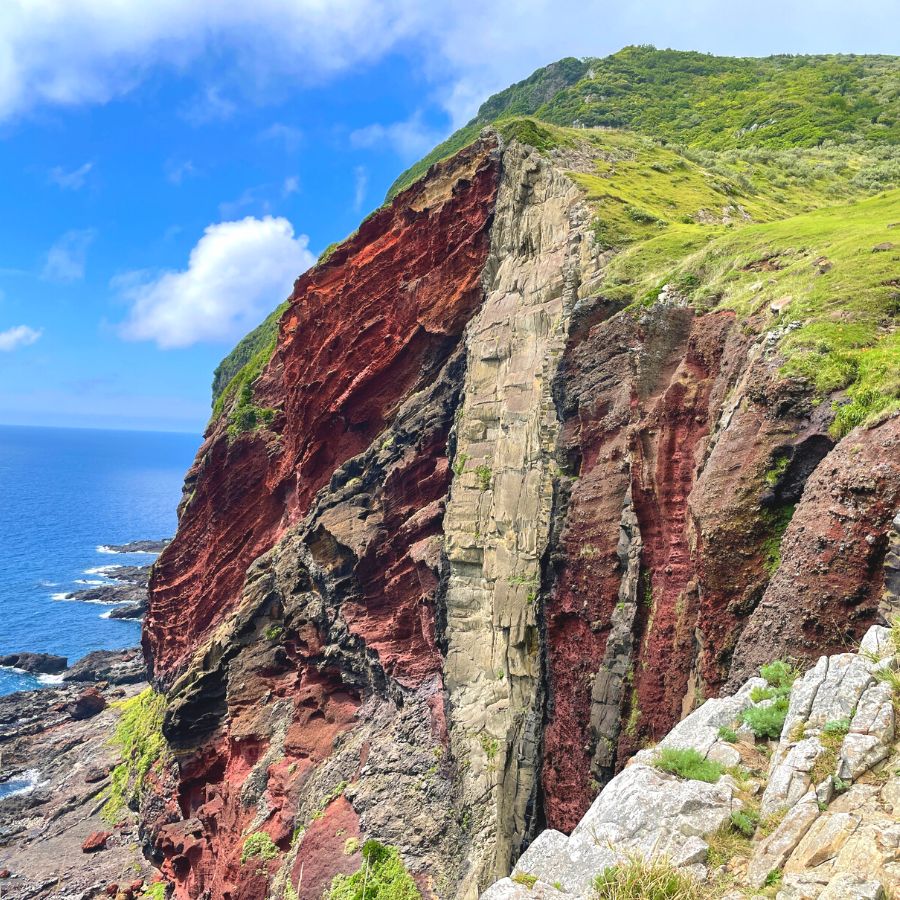
Geohistory - Terrain
As the name suggests, Sekiheki (Red Cliff) is characterized by its strikingly red rock surface.
Sekiheki is the cross section of a volcano that formed about 6 million years ago. The rocks that make up the cliff are scoria, which erupted as a spray of lava, causing the iron content to oxidize and turn red as it came in contact with the much cooler air. The 200-meter-high scoria cone faces the west side of Chiburijima Island, so it is particularly prone to seasonal winds. As a result, wind and waves have eroded it into the sheer sea cliff we see today. In addition, the flat area (wave-cut platform) continuing along the coast at the base of the cliff is thought to have been formed by erosion several thousand years ago, when the Earth was warmer and the sea level was higher than it is now.
Inside the scoria cone is a path of white trachyte lava that later flowed through the volcano's lava pathway (volcanic vent). This intrusion of another type of rock is another highlight of Sekiheki, which can only be seen today, after erosion has worn the land all the way to the center of the volcano.
*The cliff edge is not fenced. For your safety, please don’t get too close to the edge and keep a close eye on any minors accompanying you.


